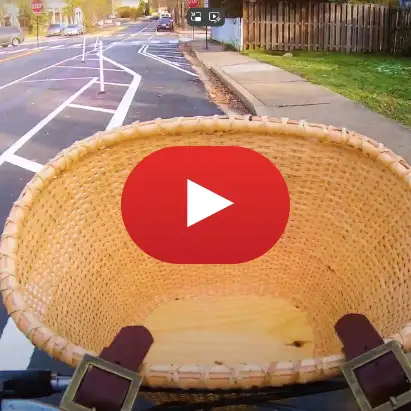It’s All Closer Than You Think
Wherever you live in Arlington, getting around without a car is easy and enjoyable, with everything you need—shops, restaurants, parks, and schools—within reach. Why not turn your short driving trips into a walk or bike ride? You’ll have the chance to discover the people and places that make your neighborhood unique. With miles of trails, sidewalks, and bike lanes connecting you to nearby destinations, Arlington is ideal for exploring on foot or by bike. WalkArlington and BikeArlington have partnered to support and equip residents with tools to make neighborhood trips without driving, helping newcomers feel confident about biking and walking around town.
The Benefits of Walking
There are many health, economic, environmental, and social benefits of walking and biking in your neighborhood—and for many people, a short walk or bike trip is a feasible journey.
Health—Regular physical activity improves mood, reduces the risk of heart disease and cancers, helps maintain or lose weight, and helps extend life. Arlington’s neighborhoods support an active lifestyle with physical activity easily done throughout the day—walking to the post office, biking to pick up groceries, or enjoying a coffee while taking a stroll.
Environmental—Driving less reduces congestion (you are traffic!). Plus sidewalks, bike paths, and bike racks are compact and enable more space for people, not cars. In 1982, an estimated 0.8 billion gallons of fuel were wasted in the United States due to traffic congestion, and that number rose to a peak of 3.6 billion gallons in 2019. In 2020, the COVID-19 pandemic led to a precipitous drop in congestion and wasted fuel, reaching a low of 1.8 billion gallons—a level not seen since 1995. However, since 2020, congestion has been on the rise again, resulting in 3.3 billion gallons of wasted fuel in 2022.
Economic—Shops benefit significantly from pedestrians and cyclists—they spend more time and money supporting the local economy than those who drive. Cambridge, Massachusetts, consistently ranks among the most walkable cities in the U.S., thanks in part to its numerous neighborhood shops that thrive on high pedestrian traffic. Research from Transport for London shows that individuals who walk or bike spend 40% more each month in local shops than motorists. In communities where streetscape improvements like cycleways have been implemented, the number of people walking increased by 93%, and activities such as shopping and visiting cafés rose by 216%. Additionally, driving less means more money in your pocket from reduced car maintenance and gasoline costs.
Social—The more people are out of their cars and on the streets, the more opportunities they have to interact with each other. Initiatives like Barcelona’s Superblocks and the 15-minute city concepts in Paris and Melbourne, demonstrate that frequenting local community centers, parks, and neighborhood shops—rather than driving to distant malls—not only creates social cohesion and strengthens community identity but also enhances safety through increased foot traffic. The outcomes of similar projects are clearly evident. For example, Madison, Wisconsin, leads the nation in pedestrian safety due to its implementation of Vision Zero and Safe Streets programs to ensure safe, inclusive spaces that encourage community connection. These approaches promote walkable, bike-friendly environments that foster stronger, safer, and more vibrant communities by encouraging social interactions and a shared sense of responsibility for public spaces.

